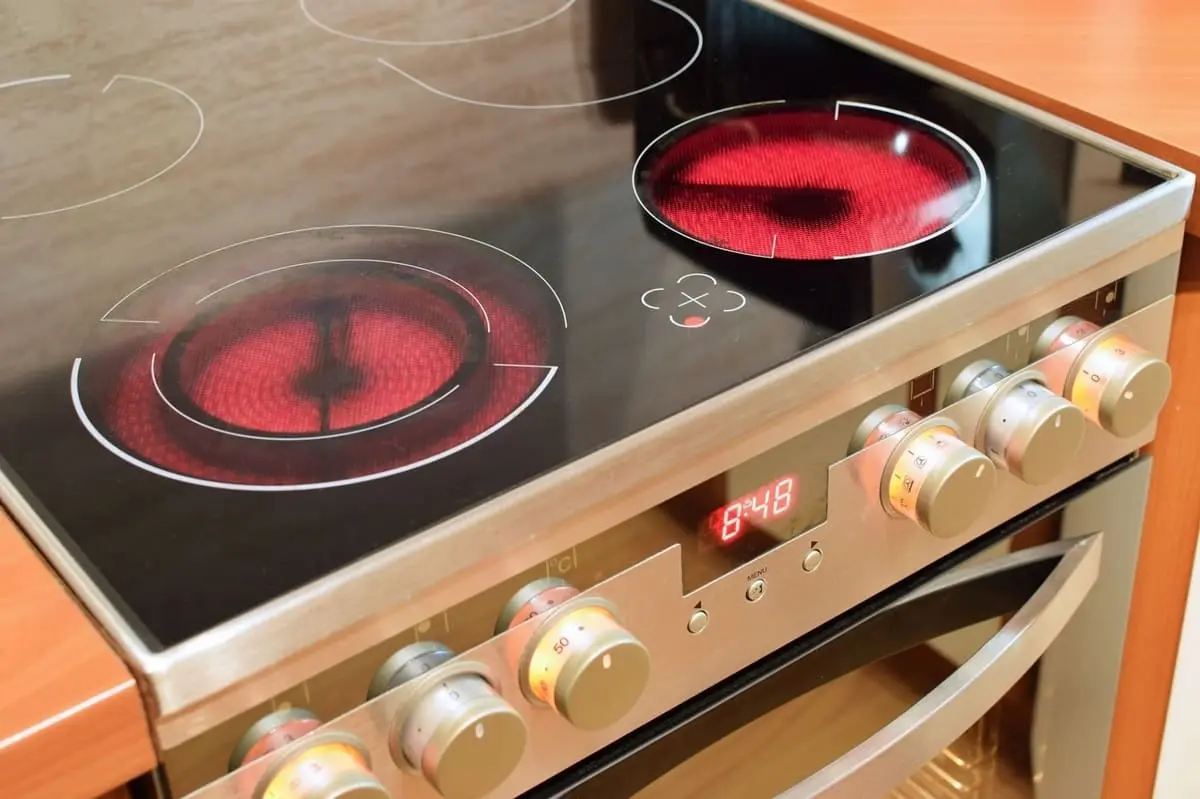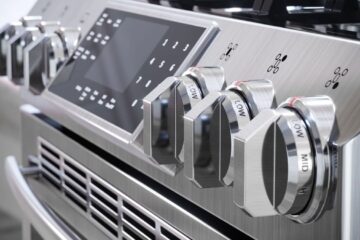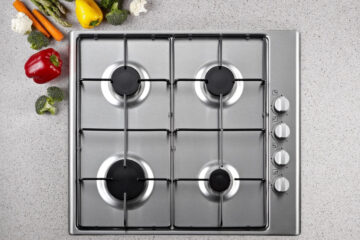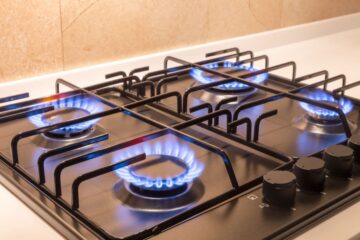Electric stoves have become a staple appliance in every modern kitchen, providing an efficient and reliable way to cook food. However, like any other appliance, they are susceptible to problems that can damage your cooking experience. Whether it’s a faulty burner, an unresponsive control panel, or uneven heating, electric stove problems can be frustrating.
Fortunately, most common electric stove problems have simple fixes that can be done without professional help. In this blog post, we will explore the most common electric stove problems and provide you with 100% fixes that you can try yourself. We will cover issues such as the burner, not heating, the burner not turning off, the control panel not responding, and many more.
By the end of this post, you’ll understand how to troubleshoot and fix common electric stove problems, so you can get back to cooking delicious meals with ease.
Common Electric Stove Problems
Electric stoves are a standard appliance in most households, known for their convenience, energy efficiency, and ease of use. However, like all appliances, electric stoves are susceptible to problems affecting their performance and making them less efficient.
What Causes An Electric Stove To Stop Working:
1. The burner is not heating up
One of the most common problems with electric stoves is when the burner does not heat up. There are several possible reasons for this, including:
- Faulty burner element: The burner element is part of the stove that heats up and transfers the heat to the cookware. Over time, the burner element can become worn out or damaged, causing it to malfunction. Suppose you suspect that the burner element is faulty. In that case, you can test it by switching it with another burner element you know is working correctly.
- Loose or damaged connection: If the burner element is not the problem, the next thing to check is the connection. Loose or damaged connections can prevent the burner from receiving power, so it will not heat up. You must unplug the stove and remove the back panel to check for loose or damaged connections. Look for any loose wires or damaged connections and tighten or repair them as needed.
- Broken switch: If the burner element and the connection are not the problems, a broken switch may prevent the burner from heating up. A broken switch can prevent power from reaching the burner element. To test if the switch is the issue, you can use a multimeter to test the continuity of the switch. If the switch is faulty, you will need to replace it.
2. The oven is not heating up
Another common problem with electric stoves is when the oven needs to be heated up. There are several possible reasons for this, including:
- Faulty heating element: The heating element is part of the oven that heats up and cooks the food. Over time, the heating element can become worn out or damaged, causing it to malfunction. Suppose you suspect that the heating element is faulty. In that case, you can test it using a multimeter for continuity. If the heating element is not working, you must replace it.
- Broken temperature sensor: The temperature sensor monitors the temperature inside the oven and ensures that it stays at the desired temperature. If the temperature sensor is faulty, it can cause the oven not to heat up or too much. To test if the temperature sensor is the issue, you can use a multimeter to test its continuity. If the temperature sensor is not working, you must replace it.
- Malfunctioning control board: The control board regulates the temperature inside the oven and controls the heating elements. If the control board is malfunctioning, it can cause the oven not to heat up or too much. You can check for any error codes displayed on the control panel to test if the control board is the issue. If there are error codes, you must consult the user manual to determine the issue.
3. Uneven heating
Uneven heating is another common problem with electric stoves, making it difficult to cook food evenly. There are several possible reasons for this, including:
- Dirty or damaged burner element: If the burner element is dirty or damaged, it can cause the heat to be unevenly distributed, resulting in uneven heating. To clean the burner element, you can use a soft brush or a non-abrasive cleaner. If the burner element is damaged, you will need to replace it.
- The uneven surface of the cookware: If the surface is not flat, it can cause uneven heating. When the cookware’s surface is not in contact with the burner element, the heat will not be transferred evenly. To solve this problem, you can use cookware with a flat and even surface. Alternatively, you can also try adjusting the placement of the cookware on the burner to ensure that it is in contact with the burner element.
- Damaged oven gasket: The gasket creates a tight seal around the door, preventing heat from escaping. If the oven gasket is damaged, it can cause heat to escape, resulting in uneven heating. To check if the oven gasket is the issue, you can visually inspect it for any signs of wear or damage. If the oven gasket is damaged, you will need to replace it.
How To Diagnose Electric Stove Problems?
Diagnosing electric stove problems can be done through a series of steps that involve checking various stove components. Here are the detailed steps you can take to diagnose electric stove problems:
1. Checking for Power Supply
The first step in diagnosing electric stove problems is to check for power supply. This is important because the stove will not function properly if there is no power. To check for power supply, you can do the following:
- Check if the stove is plugged in and the outlet is functioning correctly.
- Use a multimeter to check the outlet’s voltage to ensure it supplies power to the stove.
- Check if the circuit breaker or fuse for the stove is tripped or blown, and reset or replace it if necessary.
2. Inspecting the Heating Elements
If the power supply is OK, inspecting the heating elements is next. The heating elements are responsible for generating heat in the stove. To inspect the heating elements, you can do the following:
- Turn on the stove and see if the heating elements are glowing red. If not, there may be a problem with the heating elements themselves.
- Check the heating elements for signs of damage, such as cracks, breaks, or burn marks. If you see any damage, the heating elements may need to be replaced.
3. Testing the Temperature Sensors
Temperature sensors are responsible for monitoring the temperature in the stove and ensuring that it remains at the desired level. To test the temperature sensors, you can do the following:
- Use a multimeter to check the resistance of the temperature sensors. The resistance should change as the temperature changes. If the resistance remains the same, the temperature sensor may need to be replaced.
- Check the temperature sensors for signs of damage, such as cracks or burn marks. If there is damage, the temperature sensor may need to be replaced.
4. Examining the Control Board
The control board is the brain of the stove and controls all of its functions. If there is a problem with the control board, the stove may not function properly. To examine the control board, you can do the following:
- Check for any loose connections or wires on the control board. Tighten or reconnect any loose connections.
- Look for any signs of damage, such as burn marks or corrosion on the control board. If there is damage, the control board may need to be replaced.
- Use a multimeter to test the control board for continuity. If there is no continuity, the control board may need to be replaced.
Electric Stove Maintenance Tips
1. Regular Cleaning:
One of the most important things you can do to maintain your electric stove is to keep it clean. Here are some tips for regular cleaning:
- Wipe down the stove top with a damp cloth to remove any spills or food debris after each use.
- Use a non-abrasive cleaner to clean the stove top once a week. Follow the instructions on the cleaner and use a soft cloth or sponge.
- Remove any removable parts, like drip pans or burner rings, and clean them separately. You can soak them in warm, soapy water for a few minutes before scrubbing them clean.
2. Proper Use of Cookware:
Using the right cookware can help prevent damage to your electric stove. Here are some tips:
- Use cookware with flat bottoms that make complete contact with the heating element. This will help distribute the heat evenly and prevent hot spots.
- Avoid using cookware with rough or warped bottoms, as they can scratch the stove top and damage the heating element.
- Don’t drag or slide cookware across the stovetop; this can also scratch the surface.
3. Avoiding Spills and Food Debris:
Preventing spills and food debris from entering your electric stove can help keep it working correctly. Here are some tips:
- Use splatter screens or lids to prevent food from splattering onto the stovetop.
- Don’t let spills or food debris sit on the stovetop for too long. Clean them up immediately to prevent them from burning onto the surface.
- Don’t use abrasive sponges or scouring pads to clean the stovetop, as they can scratch the surface.
4. Professional Inspection and Repair:
If you’re having issues with your electric stove, it’s best to call a professional for inspection and repair. Here are some reasons to consider professional help:
- If your stove is not heating up correctly or the heating element is damaged, a professional can diagnose and fix the problem.
- If you smell gas or notice any other unusual odors, turn off your stove immediately and call a professional.
- If you notice any cracks or damage to the stove top or other parts of the stove, a professional can assess the damage and recommend repairs.
How Do I Know If My Electric Stove Is Bad?
Several signs can indicate that your electric stove may be bad or malfunctioning. Here are some common symptoms:
- The burners won’t heat up: If you turn on a burner and it doesn’t heat up, there may be an issue with the burner element or the switch that controls it.
- Uneven heating: If your stove burners heat unevenly or only on one side, it could be due to a damaged or worn-out burner coil or a damaged socket that houses the coil.
- Burner temperature is inconsistent: If your burners heat up at different temperatures or don’t maintain a consistent temperature, the issue could be with the burner element, the switch, or the temperature sensor.
- Burner won’t turn off: If it doesn’t turn off, it could be due to a faulty switch or a malfunctioning control board.
- Display errors: If your stove has a digital display and it’s showing error codes or not displaying anything, there could be an issue with the control board or wiring.
Why Does My Electric Stove Get Hot Then Shut Off?
If your electric stove gets hot and then shuts off, it could be due to a safety feature designed to prevent overheating and potentially dangerous situations. This safety feature is usually a thermostat or thermal cutoff switch near the heating elements.
When the stove reaches a specific temperature, the switch will automatically turn off the power to the heating elements. This helps prevent the stove from overheating and potentially causing a fire. Once the stove has cooled to a safe temperature, the switch will turn the power back on and allow the stove to continue heating.
Another possible reason for the stove shutting off could be a faulty heating element or a problem with the wiring. Suppose the heating element is damaged or the wiring is faulty. In that case, it may cause the stove to shut off to prevent further damage or a safety hazard.
In either case, it’s essential to have a professional inspect your stove to determine the cause of the problem and make any necessary repairs to ensure your safety and the proper functioning of your appliance.
Electric Stove All Burners Not Working: How to fix?
If your electric stove’s burners are not working, there are a few things you can try to troubleshoot and fix the issue:
- Check the power supply: Ensure the stove is properly plugged in and the circuit breaker or fuse has not tripped. If it has, try resetting the breaker or replacing the fuse.
- Check the burners: If only one burner is not working, try swapping it with a working burner to see if the problem is with the burner or the stove. If all burners are not working, move on to the next step.
- Check the control knobs: Ensure the control knobs are properly set to the desired temperature setting. If the knobs are not working correctly, try cleaning them with a damp cloth or replacing them.
- Check the heating element: If the heating element is faulty, the burner will not heat up. To check the heating element, remove the burner and inspect the heating coil for any damage or wear. If it is damaged, it will need to be replaced.
- Check the connections: Check the connections between the heating element and the stove. They may need to be tightened or replaced if they are loose or corroded.
Electric Glass Top Stove Burner Not Working: what are the fixes?
If your electric glass top stove burner is not working, there are several things you can do to fix it.
First, check if the burner is connected correctly and seated in its socket. If it’s loose, try reseating it firmly.
Next, check if the burner is clean and free of debris or food particles. If it’s dirty, clean it with a soft cloth or sponge and a mild detergent.
Check the wiring connections underneath the stove to see if the burner is clean and seated properly but still not working. Make sure the wiring is connected correctly and not damaged or frayed.
If the wiring is OK, the issue could be with the burner itself. You can test this by swapping the non-working burner with a working one. If the non-working burner still doesn’t work in a different socket, you may need to replace the burner.
In some cases, the issue could be with the stove’s control switch or the infinite switch that regulates the burner’s temperature. If you suspect this is the case, it’s best to call a professional technician to diagnose and fix the problem.
Remember, always turn off the power to the stove before attempting any repairs or maintenance.
How Much Electric Stove Consume Electricity?
The electricity consumption of an electric stove depends on several factors, such as the wattage of the heating elements, the temperature setting used, the frequency and duration of use, and the efficiency of the stove.
On average, an electric stove with four heating elements and an oven can consume anywhere from 2,000 to 5,000 watts per hour. However, this will vary based on the power rating of the stove and how often it is used.
To calculate the actual electricity consumption of your electric stove, you can check the appliance’s manual or label to find its wattage rating and then use a watt-hour meter or smart power meter to track its energy usage over time. This will help you estimate the cost of using your electric stove and find ways to reduce your energy consumption and save money on your electricity bill.
How Long Should An Electric Stove Last?
The lifespan of an electric stove can vary depending on several factors, including the quality of the stove, frequency of use, and how well it is maintained.
On average, an electric stove can last between 10 to 15 years with proper care and maintenance. However, some high-end models with advanced features and better build quality can last 20 years or more.
What Is The Most Reliable Electric Stove?
There are several reliable electric stove brands in the market. Some of the top-rated brands include:
- GE: GE electric stoves are known for their excellent quality, durability, and energy efficiency. They offer a range of models with various features and designs, including smooth top, coil, and induction cooktops.
- Whirlpool: Whirlpool electric stoves are known for their innovative features, including smart technology and easy-to-use controls. They offer a range of models with various cooktops and oven configurations.
- Samsung: Samsung electric stoves offer advanced technology features, including Wi-Fi connectivity and voice control. They offer a range of models with various cooktops and oven configurations.
- Frigidaire: Frigidaire electric stoves are known for their affordable price, reliable performance, and energy efficiency. They offer a range of models with various cooktops and oven configurations.
- KitchenAid: KitchenAid electric stoves offer high-end features and design. They offer a range of models with various cooktops and oven configurations.
How Much Does An Electric Stove Cost Per Month?
The cost of using an electric stove per month depends on several factors, including the cost of electricity in your area, the size of your stove, and how often you use it. However, we can estimate the average cost based on some general assumptions.
The average electric stove uses about 2.5 kilowatts of power per hour. If you use your stove for cooking two meals a day, for an hour each time, it will consume about 5 kilowatts of power per day or 150 kilowatts per month.
Assuming an average electricity rate of $0.13 per kilowatt-hour, running an electric stove for two meals a day would cost around $19.50. This is just an estimate, and your actual costs may vary depending on your usage patterns and electricity rates in your area.
Electric stoves are generally more energy-efficient than gas stoves so the cost difference may be offset over time by lower energy bills.
Overall Thoughts
All in all, electric stoves are an essential appliance in most homes, and it’s frustrating when they don’t function correctly. However, most electric stove problems can be fixed with troubleshooting and the right approach. From faulty burners to malfunctioning thermostats, the solutions discussed in this post should help you get your stove back in working order without breaking the bank.
Remember to always prioritize your safety by disconnecting your stove before attempting any repairs. If all else fails, don’t hesitate to call a professional. With the proper knowledge and patience, your stove will be up and running quickly.



